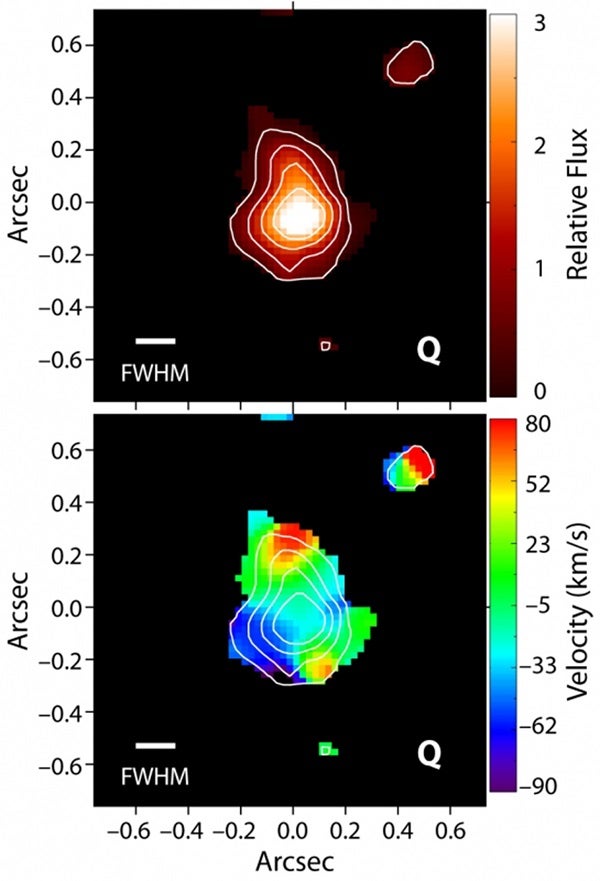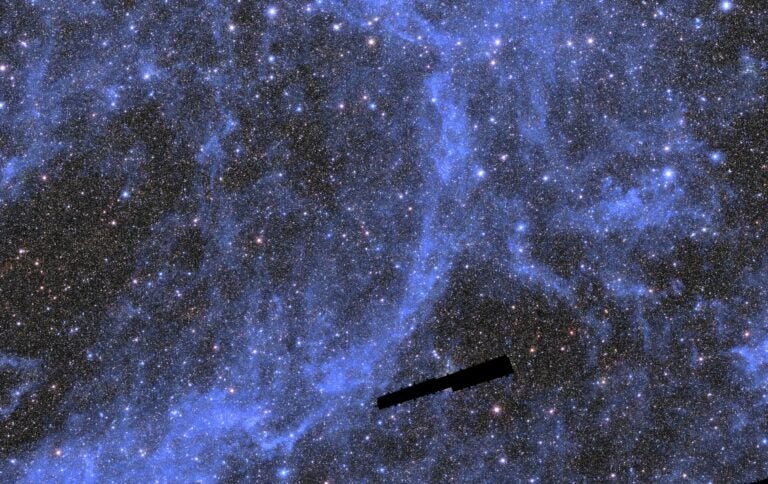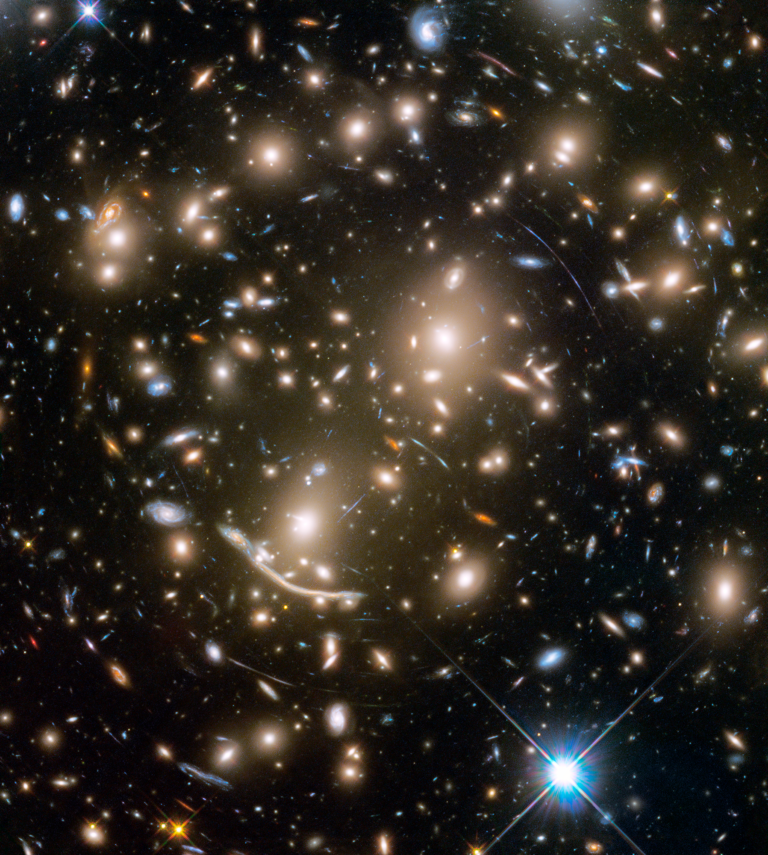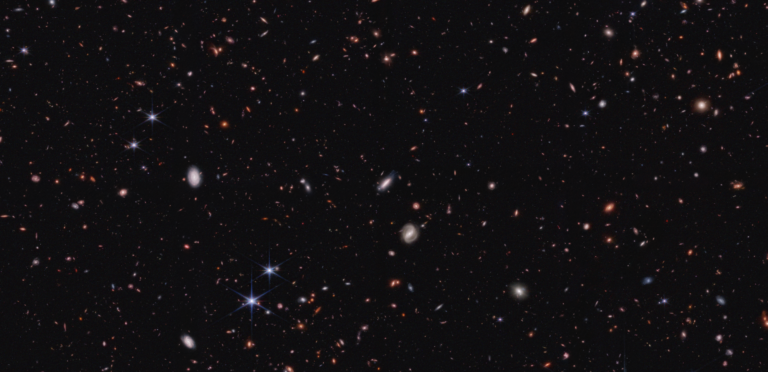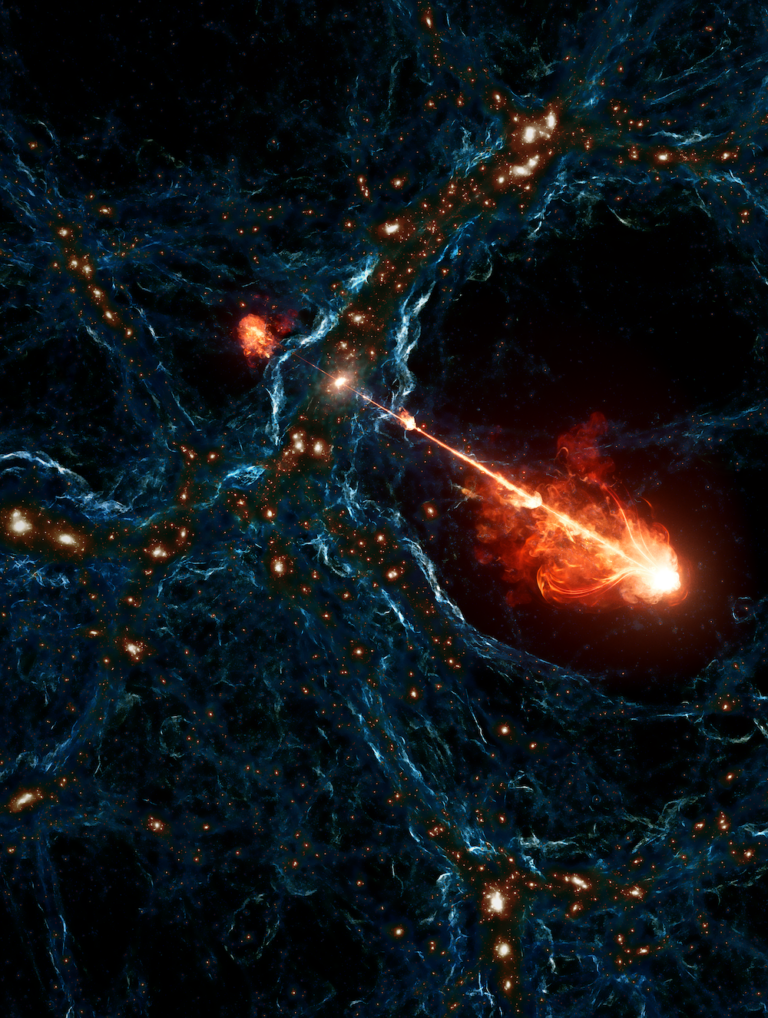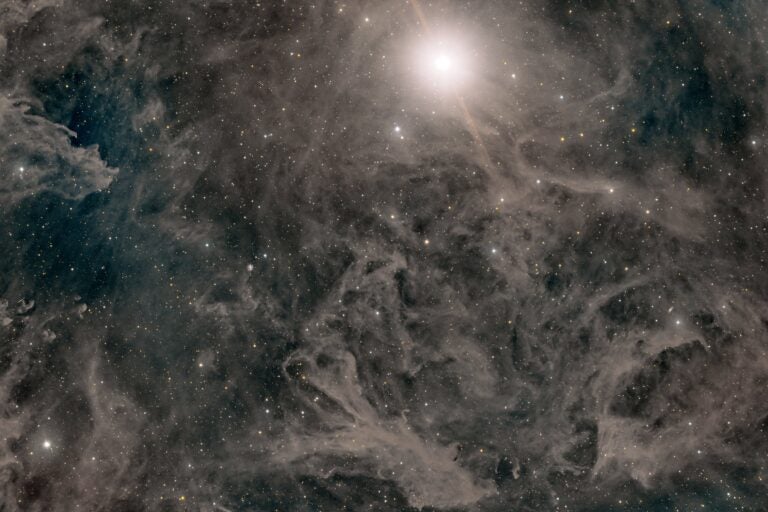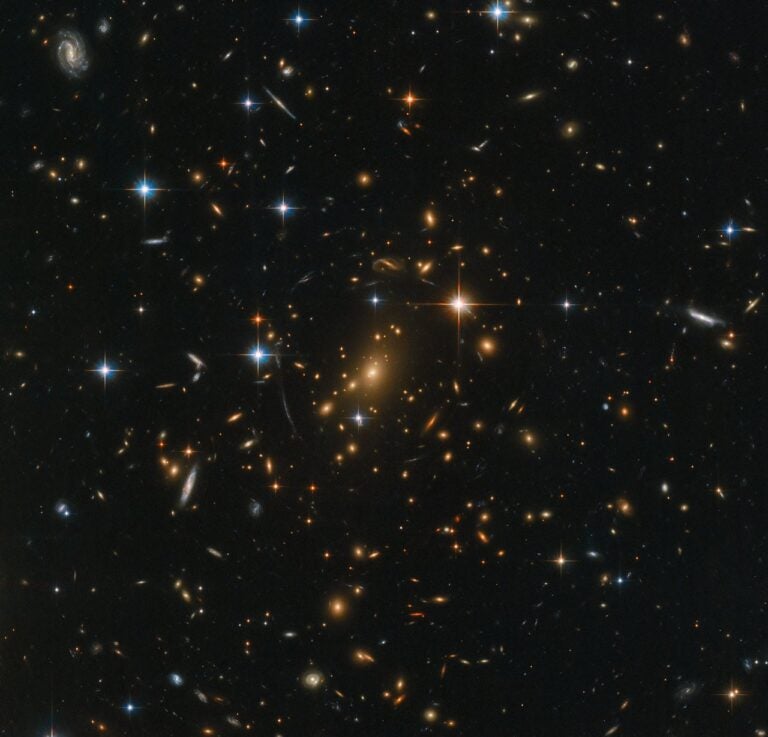The galaxy, called DLA 2222-0946, is so faint that it is virtually invisible at all but a few specific wavelengths. It is a member of a class of galaxies thought to be the progenitors of spiral galaxies like our Milky Way.
These galaxies are known to contain most of the neutral gas that is the fuel for star formation, so they are an important tool for understanding star and galaxy formation and evolution. Discovered and classified over 30 years ago, they have been notoriously difficult to see directly.
Jorgenson and Arthur Wolfe from the University of California, San Diego, used the advanced technologies of the W. M. Keck Observatory on Mauna Kea to obtain the first ever spatially resolved images of a galaxy of this type.
The galaxy was detected with the 10-meter Keck I Telescope fitted with OSIRIS and the Laser Guide Star Adaptive Optics system.
DLA 2222-0946 was initially detected not by its own light but by absorbing some of the light of an even more distant quasar. Galaxies detected in this way are called damped Lyman-alpha systems (DLAs) based on the specific color of light they absorb due to their copious reservoirs of hydrogen gas.
While thousands of DLAs are now known thanks to the large Sloan Digitized Sky Survey (SDSS), their detection in absorption tells us only about the small part of the galaxy pierced by the background quasar’s light. This is akin to trying to map a fog bank from a single headlight shining through it.
A full understanding of the distant galaxy requires a direct detection, which had eluded astronomers until now.
“These galaxies are extraordinary for being ordinary. They represent normal types of galaxies rather than the brightest, extreme, and most rapidly star-forming galaxies that are typically observed at these redshifts,” Jorgenson said. “But this normalcy makes them nearly impossible to detect directly from the light they give off because first, that emission is relatively weak, and second, the bright background quasar used to find the galaxy hampers the detection of fainter foreground emission from the galaxy itself.”
The galaxy is located at a redshift of 2.354, which corresponds to a time when the universe was about 20 percent of its current age, about 10.8 billion years ago. This time in the universe’s history was a key period of galaxy formation, and hence, observing typical galaxies from this time will potentially provide great insight into the relevant physical processes.
Determining exactly how galaxies such as these, which are essentially massive reservoirs of neutral gas, turn that gas into stars is a key missing piece of the star and galaxy formation puzzle.

